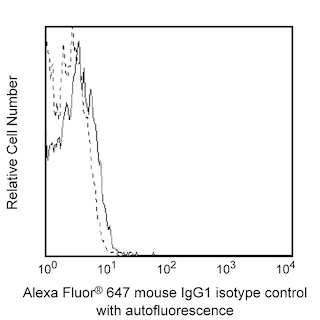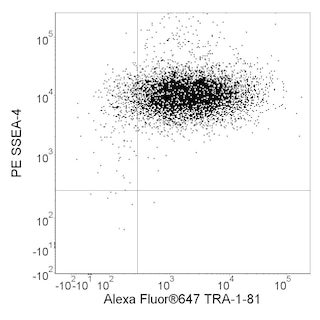-
Reagents
- Flow Cytometry Reagents
-
Western Blotting and Molecular Reagents
- Immunoassay Reagents
-
Single-Cell Multiomics Reagents
- BD® AbSeq Assay
- BD Rhapsody™ Accessory Kits
- BD® Single-Cell Multiplexing Kit
- BD Rhapsody™ Targeted mRNA Kits
- BD Rhapsody™ Whole Transcriptome Analysis (WTA) Amplification Kit
- BD Rhapsody™ TCR/BCR Profiling Assays for Human and Mouse
- BD® OMICS-Guard Sample Preservation Buffer
- BD Rhapsody™ ATAC-Seq Assays
-
Functional Assays
-
Microscopy and Imaging Reagents
-
Cell Preparation and Separation Reagents
-
Training
- Flow Cytometry Basic Training
-
Product-Based Training
- BD FACSDiscover™ S8 Cell Sorter Product Training
- Accuri C6 Plus Product-Based Training
- FACSAria Product Based Training
- FACSCanto Product-Based Training
- FACSLyric Product-Based Training
- FACSMelody Product-Based Training
- FACSymphony Product-Based Training
- HTS Product-Based Training
- LSRFortessa Product-Based Training
- Advanced Training
-
- BD® AbSeq Assay
- BD Rhapsody™ Accessory Kits
- BD® Single-Cell Multiplexing Kit
- BD Rhapsody™ Targeted mRNA Kits
- BD Rhapsody™ Whole Transcriptome Analysis (WTA) Amplification Kit
- BD Rhapsody™ TCR/BCR Profiling Assays for Human and Mouse
- BD® OMICS-Guard Sample Preservation Buffer
- BD Rhapsody™ ATAC-Seq Assays
-
- BD FACSDiscover™ S8 Cell Sorter Product Training
- Accuri C6 Plus Product-Based Training
- FACSAria Product Based Training
- FACSCanto Product-Based Training
- FACSLyric Product-Based Training
- FACSMelody Product-Based Training
- FACSymphony Product-Based Training
- HTS Product-Based Training
- LSRFortessa Product-Based Training
- United States (English)
-
Change country/language
Old Browser
This page has been recently translated and is available in French now.
Looks like you're visiting us from {countryName}.
Would you like to stay on the current country site or be switched to your country?






Flow cytometric analysis of Nkx6.1 expression in mouse pancreatic tumor (insulinoma) cells. Beta-TC-6 (ATCC, CRL-11506™) cells were harvested with Accutase™ Cell Detachment Solution, fixed with BD Cytofix™ fixation buffer (Cat. No. 554655), and permeabilized with BD Phosflow™ Perm Buffer III (Cat. No. 558050). The cells were stained with either Alexa Fluor® 647 Mouse IgG1, κ isotype control (dashed line, Cat. No. 557714) or Alexa Fluor® 647 Mouse Anti-Nkx6.1 monoclonal antibody (solid line) at matched concentrations. Histograms were derived from gated events based on light scattering characteristics of Beta-TC-6 cells. Flow cytometry was performed on a BD LSRFortessa™ flow cytometry system. We do not recommend BD Phosflow™ Perm/Wash Buffer I for permeabilization.

Immunofluorescent staining of Nkx6.1 in mouse pancreatic tumor (Insulinoma) cells. Beta-TC-6 cells (ATCC, CRL-11506™) were fixed with BD Cytofix™ fixation buffer (Cat. No. 554655), permeabilized with BD Phosflow™ Perm Buffer III (Cat. No. 558050), and stained with Alexa Fluor® 647 Mouse anti-Human anti-Nkx6.1 (pseudo-colored red). Counter-staining was with DAPI (pseudo-colored blue). The images were captured on a BD Pathway™ 435 Cell Analyzer and merged using BD AttoVision™ Software.


BD Pharmingen™ Alexa Fluor® 647 Mouse anti-Nkx6.1

BD Pharmingen™ Alexa Fluor® 647 Mouse anti-Nkx6.1

Regulatory Status Legend
Any use of products other than the permitted use without the express written authorization of Becton, Dickinson and Company is strictly prohibited.
Preparation And Storage
Product Notices
- This reagent has been pre-diluted for use at the recommended Volume per Test. We typically use 1 × 10^6 cells in a 100-µl experimental sample (a test).
- An isotype control should be used at the same concentration as the antibody of interest.
- Species cross-reactivity detected in product development may not have been confirmed on every format and/or application.
- Caution: Sodium azide yields highly toxic hydrazoic acid under acidic conditions. Dilute azide compounds in running water before discarding to avoid accumulation of potentially explosive deposits in plumbing.
- Alexa Fluor® 647 fluorochrome emission is collected at the same instrument settings as for allophycocyanin (APC).
- The Alexa Fluor®, Pacific Blue™, and Cascade Blue® dye antibody conjugates in this product are sold under license from Molecular Probes, Inc. for research use only, excluding use in combination with microarrays, or as analyte specific reagents. The Alexa Fluor® dyes (except for Alexa Fluor® 430), Pacific Blue™ dye, and Cascade Blue® dye are covered by pending and issued patents.
- Source of all serum proteins is from USDA inspected abattoirs located in the United States.
- Alexa Fluor® is a registered trademark of Molecular Probes, Inc., Eugene, OR.
- Accutase is a registered trademark of Innovative Cell Technologies, Inc.
- All other brands are trademarks of their respective owners.
- For fluorochrome spectra and suitable instrument settings, please refer to our Multicolor Flow Cytometry web page at www.bdbiosciences.com/colors.
- Please refer to www.bdbiosciences.com/us/s/resources for technical protocols.
Companion Products





The R11-560 monoclonal antibody specifically binds to human and mouse homeobox protein Nkx6.1. The transcription factor Nkx6.1 plays a role in pancreatic islet beta cell development through the regulation of HNF1a and insulin genes. Nkx6.1 is considered to be a highly specific transcription factor marking pancreatic beta islet cells, where it is expressed in both developing and mature cells. In addition, Nkx6.1 functions as a transcriptional repressor induced by the Sonic Hedgehog (Shh) signaling pathway in fate determination of several neuronal cell types. During antibody development, the purified R11-560 monoclonal antibody was found to detect Nkx6.1 by western blot and indirect immunofluorescent staining followed by flow cytometric analysis or imaging analysis.
Development References (6)
-
D'Amour KA, Bang AG, Eliazer S, et al . Production of pancreatic hormone-expressing endocrine cells from human embryonic stem cells. Nat Biotechnol. 2006; 24(12):1481-1483. (Biology). View Reference
-
Donelan W, Koya V, Li SW, Yang LJ. Distinct regulation of hepatic nuclear factor 1alpha by NKX6.1 in pancreatic beta cells. J Biol Chem. 2010; 285(16):12181-12189. (Biology). View Reference
-
Inoue H, Rudnick A, German MS, Veile R, Donis-Keller H, Permutt MA. Isolation, characterization, and chromosomal mapping of the human Nkx6.1 gene (NKX6A), a new pancreatic islet homeobox gene. Genomics. 1997; 40:367-370. (Biology). View Reference
-
Nelson SB, Schaffer AE, Sander M. The transcription factors Nkx6.1 and Nkx6.2 possess equivalent activities in promoting beta-cell fate specification in Pdx1+ pancreatic progenitor cells. Development. 2007; 134(13):2491-2500. (Biology). View Reference
-
Pedersen IL, Klinck R, Hecksher-Sorensen J, et al. Generation and characterization of monoclonal antibodies against the transcription factor Nkx6.1. J Histochem Cytochem. 2006; 54(5):567-574. (Biology). View Reference
-
Prakash N, Puelles E, Freude K, et. al. Nkx6-1 controls the identity and fate of red nucleus and oculomotor neurons in the mouse midbrain. Development. 2009; 136(15):2545-2555. (Biology). View Reference
Please refer to Support Documents for Quality Certificates
Global - Refer to manufacturer's instructions for use and related User Manuals and Technical data sheets before using this products as described
Comparisons, where applicable, are made against older BD Technology, manual methods or are general performance claims. Comparisons are not made against non-BD technologies, unless otherwise noted.
For Research Use Only. Not for use in diagnostic or therapeutic procedures.
Report a Site Issue
This form is intended to help us improve our website experience. For other support, please visit our Contact Us page.